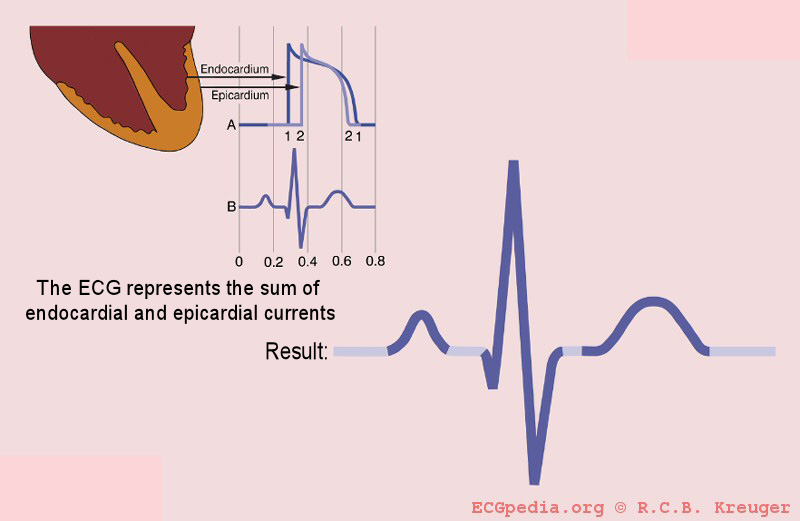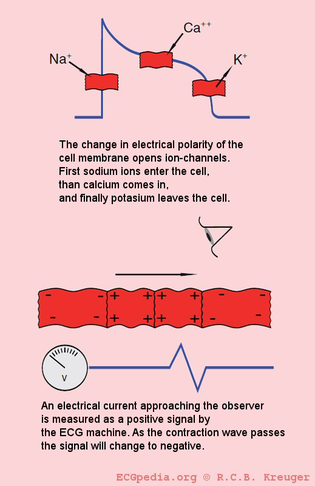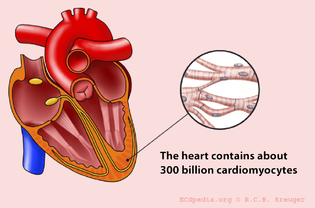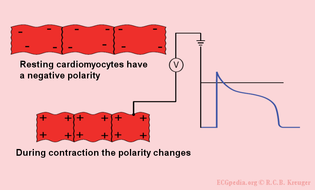What does the ECG register?
- The electrocardiogram
- An electrocardiogram (ECG or EKG) is a register of the heart's electrical activity.
Just like skeletal muscles, heart muscles are electrically stimulated to contract. This stimulation is also called activation or excitation.
Cardiac muscles are electrically charged at rest. The inside of the
cell is negatively charged relative to the outside (resting potential).
If the cardiac muscle cells are electrically stimulated, they depolarize
(the resting potential changes from negative to positive) and contract.
The electrical activity of a single cell can be registered as the action potential.
As the electrical impulse spreads through the heart, the electrical
field changes continually in size and direction. The ECG is a graph of
these electrical cardiac signals.
The ECG represents the sum of the action potentials of millions of cardiomyocytes
| This movie shows the contraction of a single (rabbit) heart cell. The glass electrode measures the electrical current in the heart cell (with thepatch-clamp method). The electrical signal is written in blue and shows the action potential. Courtesy of Arie Verkerk and Antoni van Ginneken, AMC, Amsterdam, The Netherlands. |
The individual action potentials of the individual cardiomyocytes are averaged. The final result, which is shown on the ECG, is actually the average of billions of microscopic electrical signals.
During the depolarization, sodium ions stream into the cell.
Subsequently, the calcium ions stream into the cell. These calcium ions
cause the actual muscular contraction.
Finally the potassium ions stream out of the cell. During
repolarization the ion concentration returns to its precontraction
state. On the ECG, an action potential wave coming toward the electrode
is shown as a positive (upwards) signal. Here the ECG electrode is
represented as an eye.




ليست هناك تعليقات:
إرسال تعليق